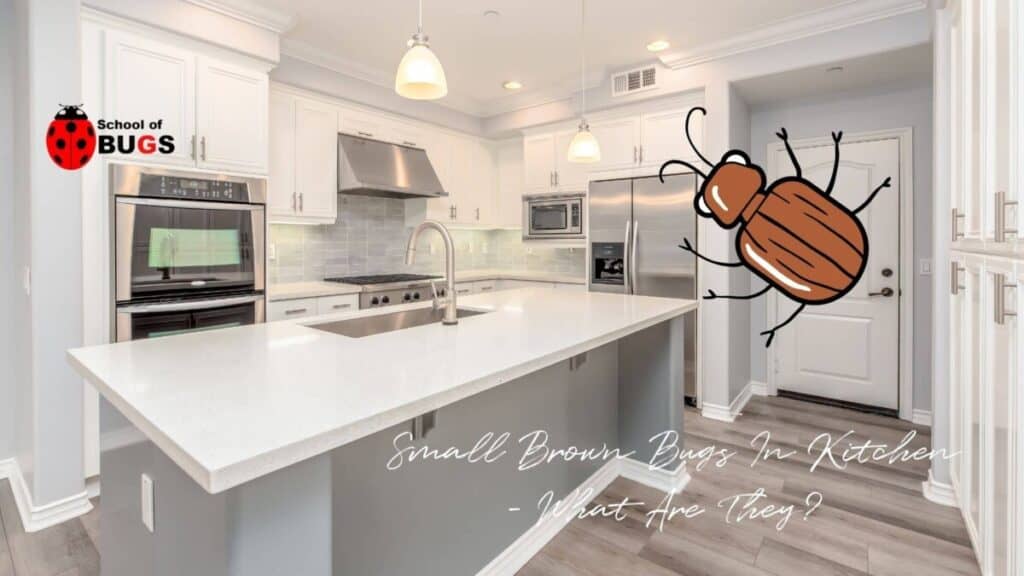
Anyone would get creeped out to find any type of bug in their kitchen but anxiety can become worse when you have no idea what the little brown bugs are.
It can be tripled because you have no idea what to do about them.
Small brown bugs in the kitchen could be a lot of different bugs. Some of the top choices are grain weevils, spider beetles, fungus gnats, rice moths, and flour beetles.
While this isn’t a complete list, these are the most common small brown bugs found in kitchens.
These bugs like the food you have, which is why they are drawn to your kitchen. Read on to find out more about them and how to get rid of them.
5 Bugs You May Find in Your Kitchen
There could be lots of different bugs in your yard but most of those can’t get into your home. There are five kitchen bugs that pose problems for homeowners.
Grain Weevil
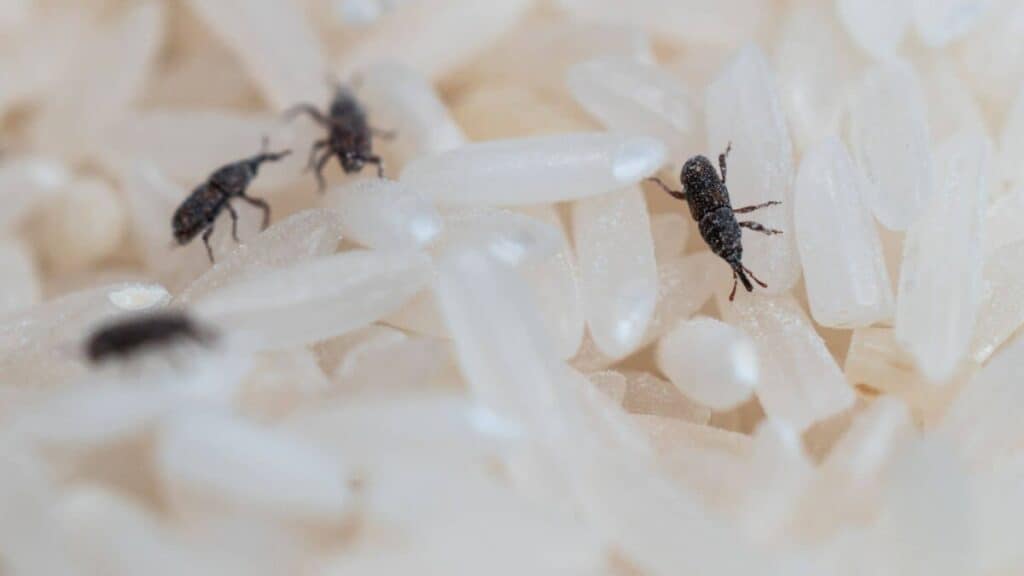
The grain weevil is also called the wheat weevil. It likes cereal grains so it likes pantries and places where grains are kept.
The female can produce rapidly laying between 26 and 254 eggs with larvae eating inside of grain kernels.
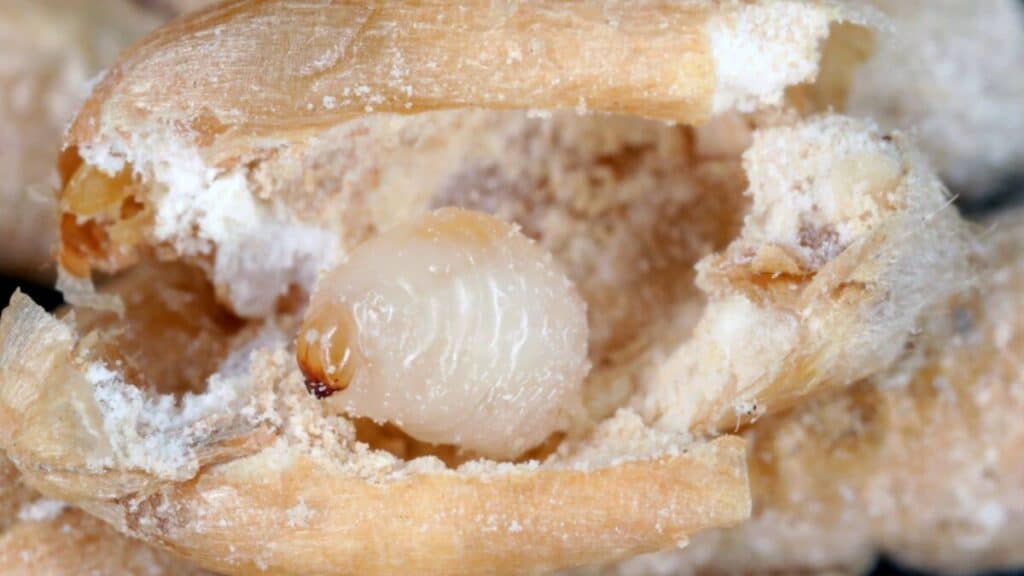
You will know this bug by its longer snout and chewing mouth. It’s between .12 and .20 inches long (less than a fifth of an inch maximum).
They eat all types of grains and corn. Adults have a reddish-brown tone while larvae are white with a tan head.
These bugs can’t fly and can live up to 20 weeks in cooler weather. Some adults can live up to eight months. They can also “play dead” when threatened.
How To Rid Your Kitchen of Grain Weevils
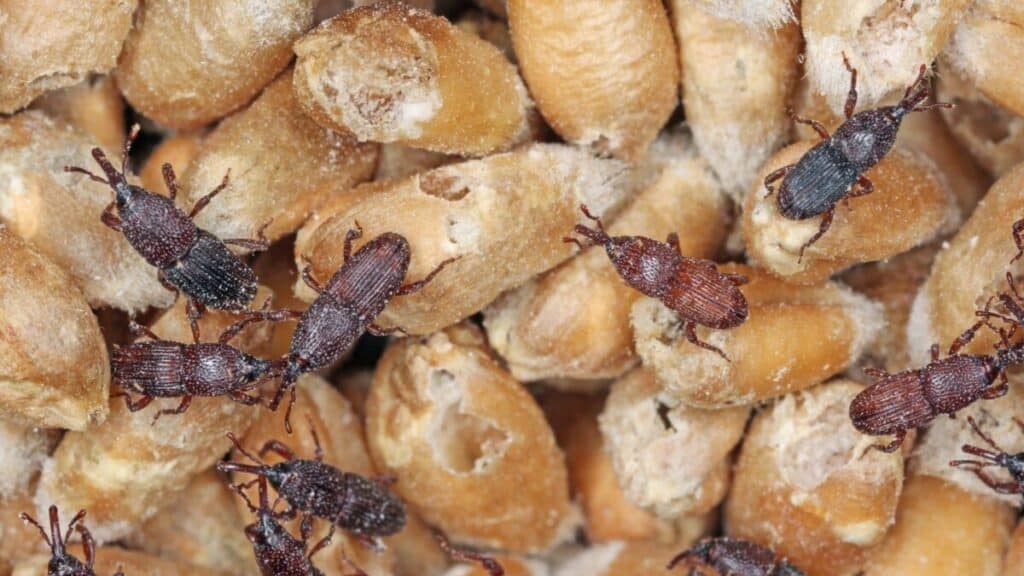
It’s a step-by-step process to keep your kitchen free of these bugs. The first thing to do is get rid of any infested foods and dispose of all garbage in an outside trash can away from the house.
Next, you will need to remove everything from your pantry and vacuum it. Be sure to hit all shelves, crevices, and cracks. Wipe all areas down with white vinegar before putting your items back inside.
Dispose of any vacuum bags used in the outside trash.
You will need to check your pantry on a routine basis. It sometimes takes several attempts to get rid of them altogether since some eggs may be laid in deep crevices and not killed during a previous cleaning.
Spider Beetles
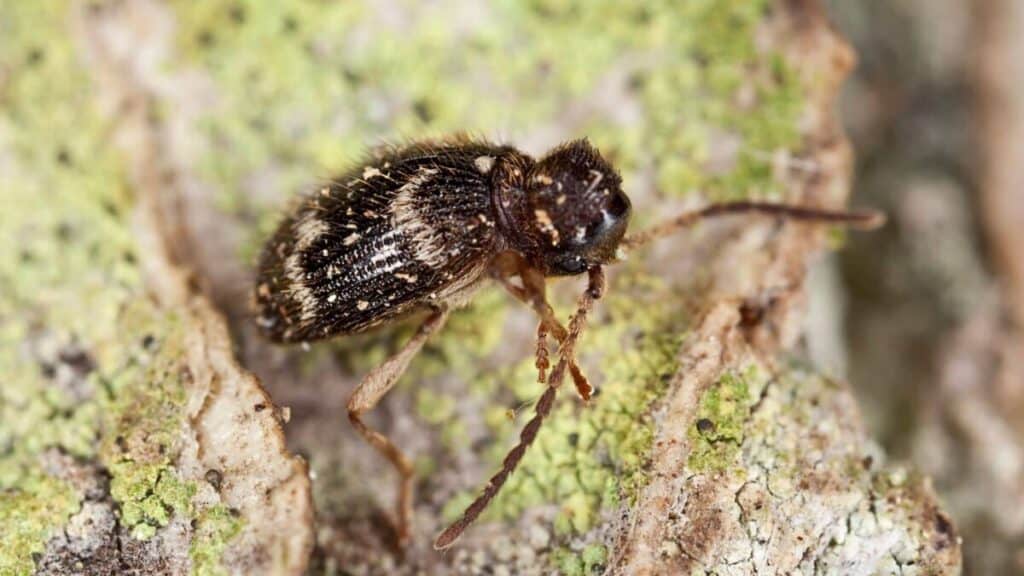
These are aptly named because they look like small brown spiders. They aren’t as common as other brown bugs but are scavengers. That means they are found in places like pantries and warehouses.
The American version is just .138 inch (3.5 mm) maximum length and can be a third of that size. It is dark brown, almost red, and sometimes black.
The spider beetle has a round abdomen and can be shiny. It has hairs that cover its legs, antennae, thorax, and head.
Larvae are cream-colored and have light brown heads.
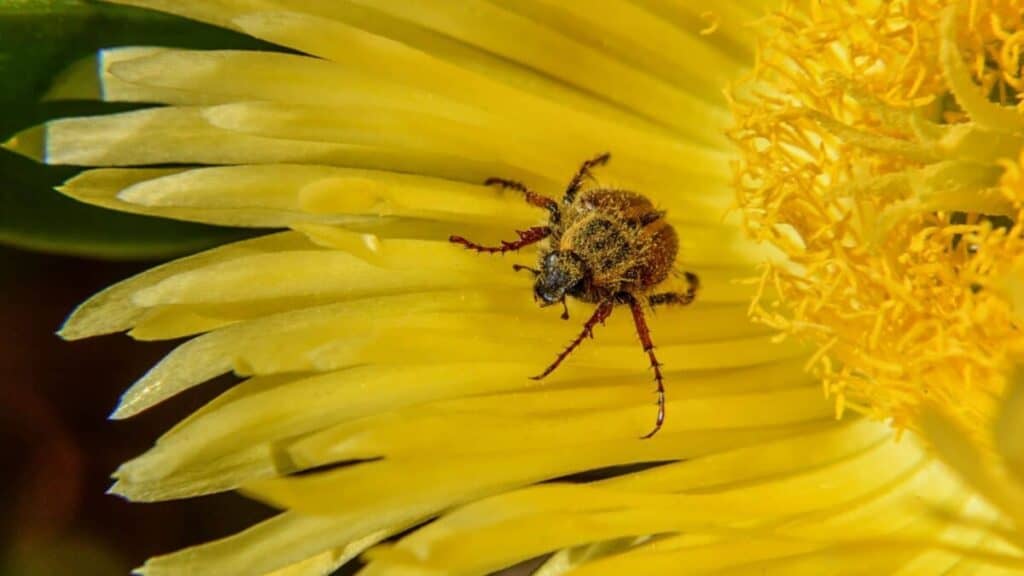
The food these bugs like are beans, bones, almonds, cereals, cornmeal, chocolate powder, dates, dried fruits, dried soup, dried mushrooms, grains, corn, nutmeg, paprika, rye, seeds, and wheat.
They are good at remaining unseen and eating at night. They like dark, damp locations and love food that moisture has spoiled. They tend to live in the cracks of wooden floors, in the walls, in attics, and pantries.
How to Rid the Kitchen of Spider Beetles
The first solution to getting rid of spider beetles is, much like any other bug mentioned in this article, to get rid of any infested food. The problem with this bug is they like a lot of stuff.
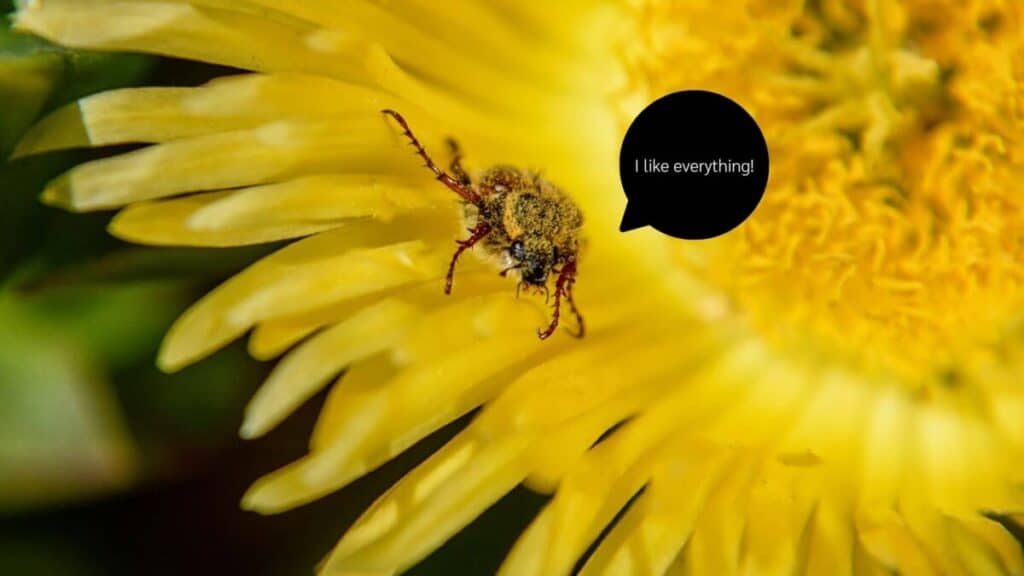
Another problem is they may not have a nest in the kitchen but somewhere else, like the attic.
You can place sticky traps where the bugs were last seen. Move the traps around to different areas and track their movement by how many you catch until you find the source of the infestation.
Fungus Gnats
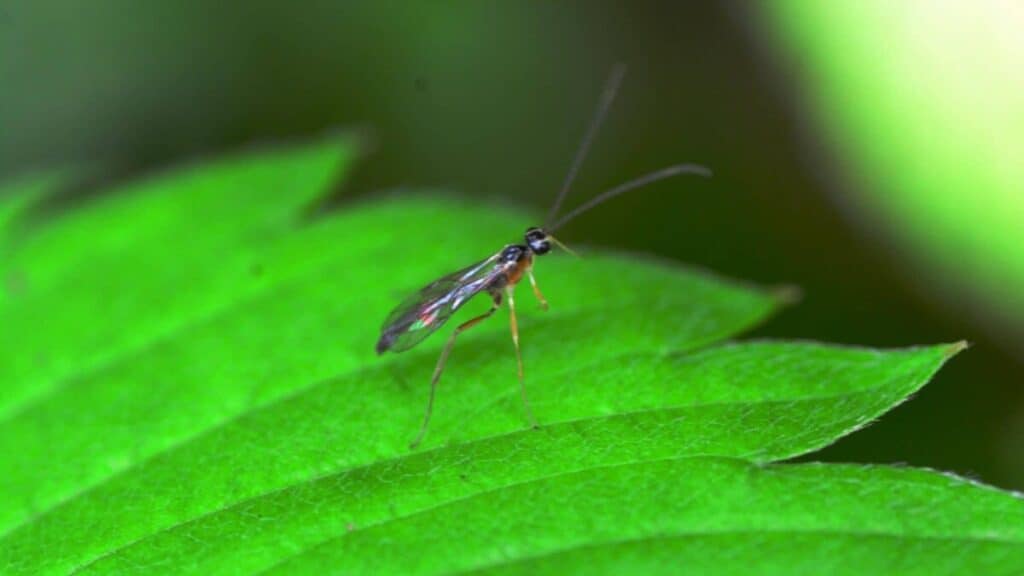
These annoying little creatures fly fast and seem to multiply overnight.
They are tiny flies that feed on organic decomposing items so they will buzz around overripe fruit on a counter, garbage, and containers where you are growing herbs or flowers.
That includes small pots where you are growing things, as well as vases of flowers, where the water hasn’t been changed out for a while.
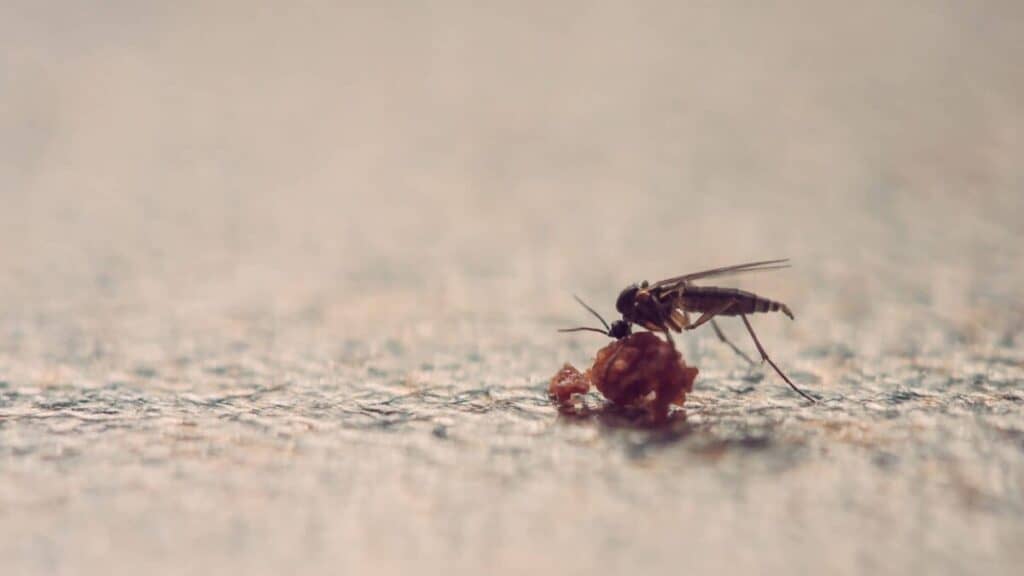
They may also fly near windows or light fixtures because they are drawn to light.
Fungus gnats are dark, black, or brown, and can look like tiny mosquitos. Their wings are clear.
They have long antennae and typically only grow to between .16 to .08 of an inch long. The damage they cause is mostly to live plants rather than food, although they do infect food.
They can have generations of bugs that overlap and new batches can be born in about 17 days once adults emerge.
How to Rid Your Kitchen of Fungus Gnats
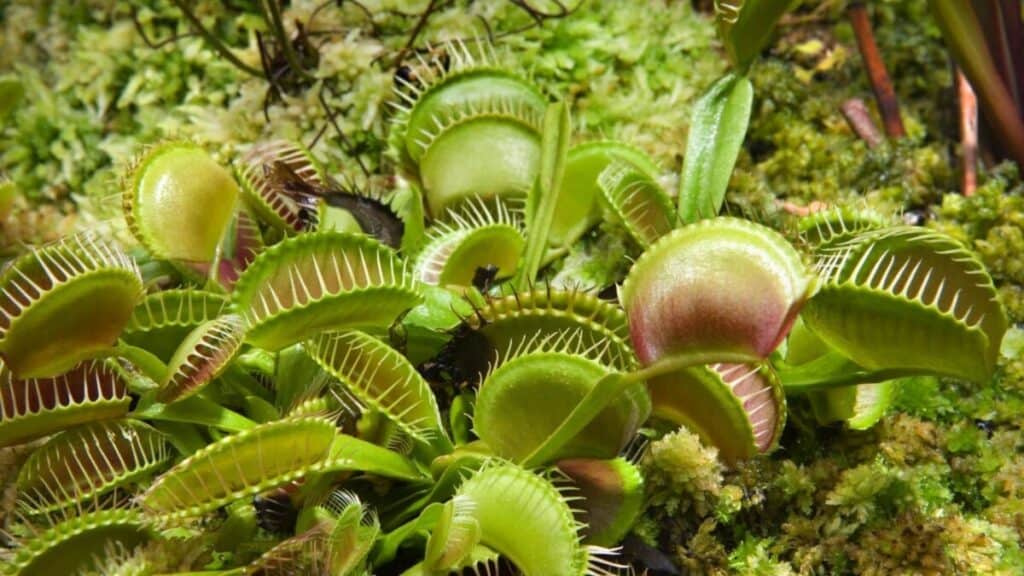
The best way to rid your kitchen of these types of bugs is to kill the offspring first. Reducing moisture and organic garbage in the kitchen will help.
Some insecticides work well on potted plants where the bugs are but you have to be careful around foods so they aren’t typically recommended for home use.
Flytraps near windows or areas where the gnats appear work well. Be sure to get rid of dead plants and change out the water of vases regularly.
Rice Moths
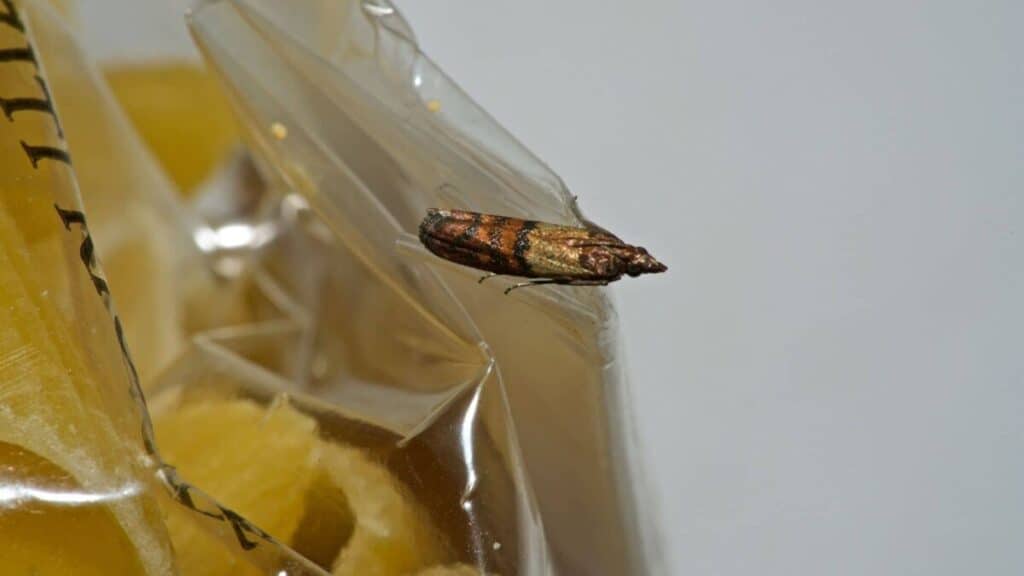
Rice moths, another flying bug, zig-zag around your home. They are also called pantry moths or Indian meal moths.
One of the larger kitchen bugs, they are a little less than a half-inch long but they have wings and that makes them seem bigger.
The wing starts as dark brown near the head but is gray or bronze at the end.
They sneak into your home sometimes when you bring dry packets and foods in from the store. These bugs are common for infesting grocery stores warehouses.
Some move into your home from a wall crack or an open window.
Those living in a warm humid area, like in the South, will see the outside, especially in the summer.
Unlike the other small brown bugs, these bugs don’t want your food. They want to lay eggs. The larvae are the ones who are eating your food. They love all kinds of dry food like flour, cereals, and flour.
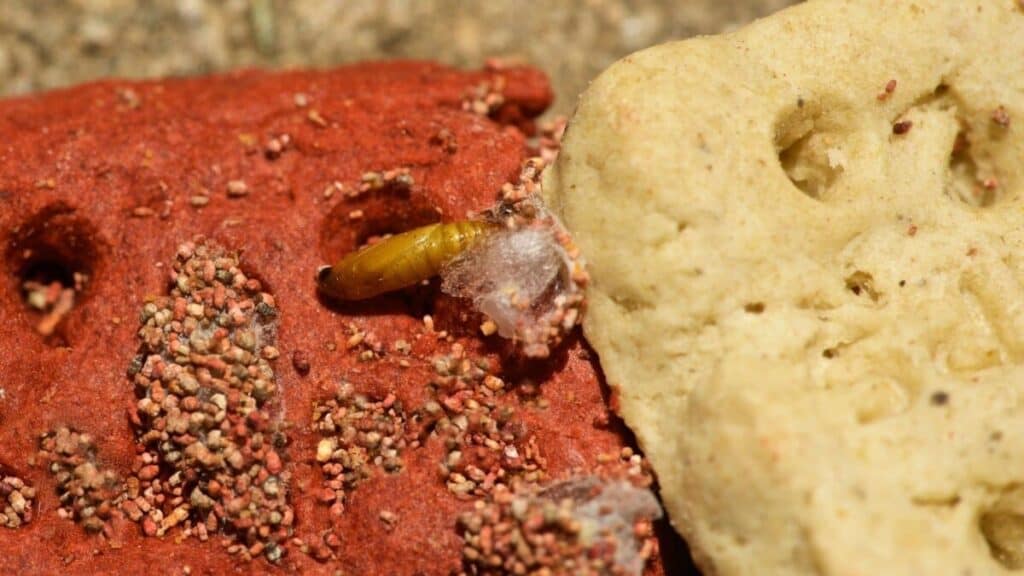
The worst part is they will shed their skin and poop on the food.
The little ones look like baby, cream-colored caterpillars with brown heads. They can be hard to see in flour and rice so you will need to look for molds on your items to know the larvae are there too.
They create mold while they are eating.
Other signs are the adults flying inside the home and you will also see silk webbings on your food. There will be clusters inside your rice and flour containers.
How to Rid Your Kitchen of Rice Moths
After you throw away all the infested food, you need to revamp some areas of your kitchen to prevent future feeding as well as kill the bugs there.
Get thicker food containers. These bugs can cut through thick containers to lay their eggs. Get some that seal and are air-tight. However, you will still need to check every container and jar for infestation.
Clean your entire kitchen, including the cabinets and pantry storage. Make sure there aren’t any food droppings or crumbs left anywhere. Vacuum the floor to get up all of it.
Moth traps will help you kill off the flying adults. Make sure to change the traps regularly or you will attract ants that want to feed off the dead bodies.
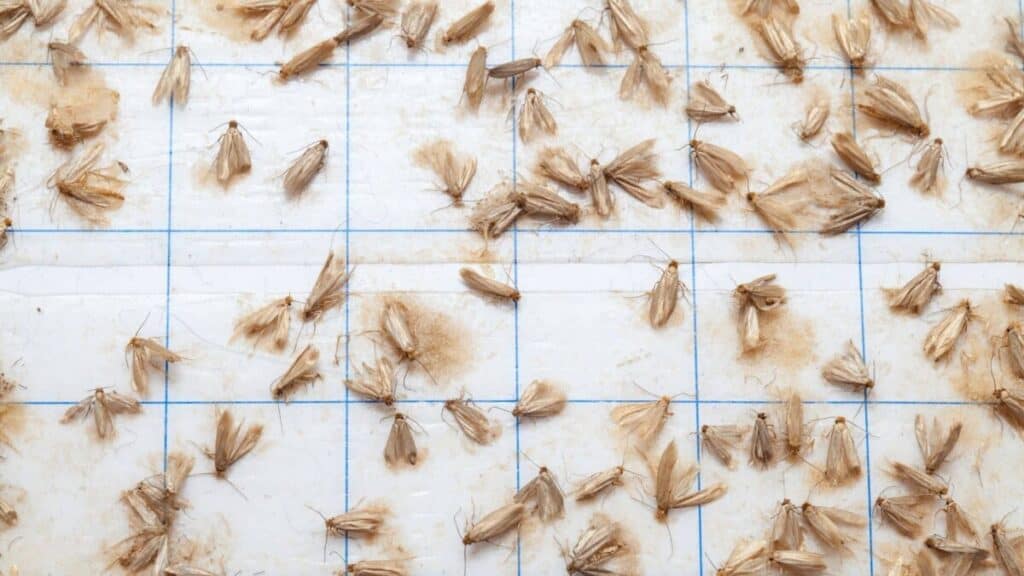
Flour Beetles
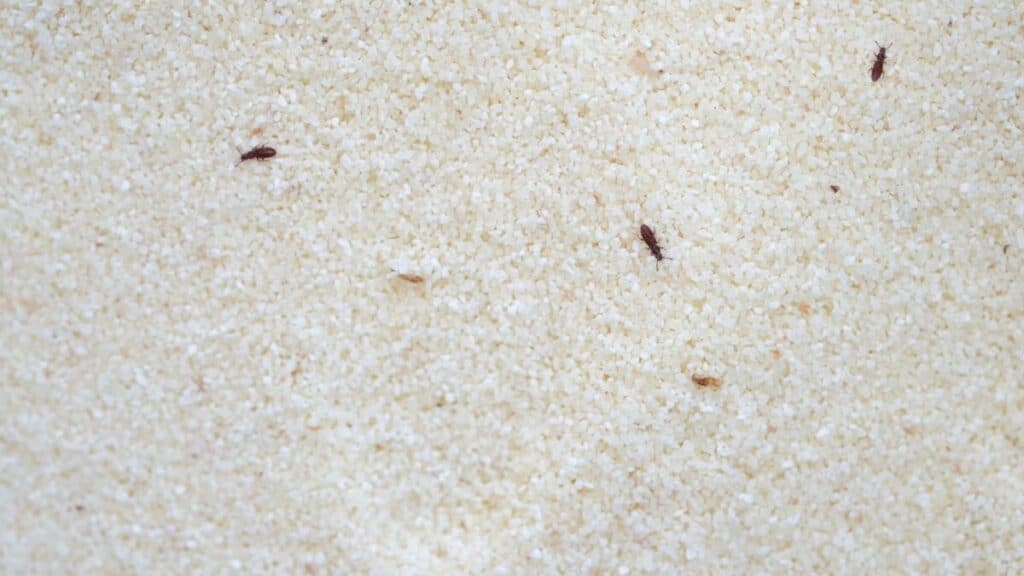
Flour beetles, which is the most common kitchen bug, come in two varieties known as the red flour beetle and the confused flour beetle.
They look virtually identical at 3/16 inches long with flat bodies. Larvae are less than 1/8 inch long.
They are cherry red or brown.
Like their name, these bugs feed on flour and items made from both processed and ground grain. It’s the larvae that do most of the eating.
While they can’t eat whole-grain kernels, these pests do eat broken pieces of kernels as well as flour and cornmeal.
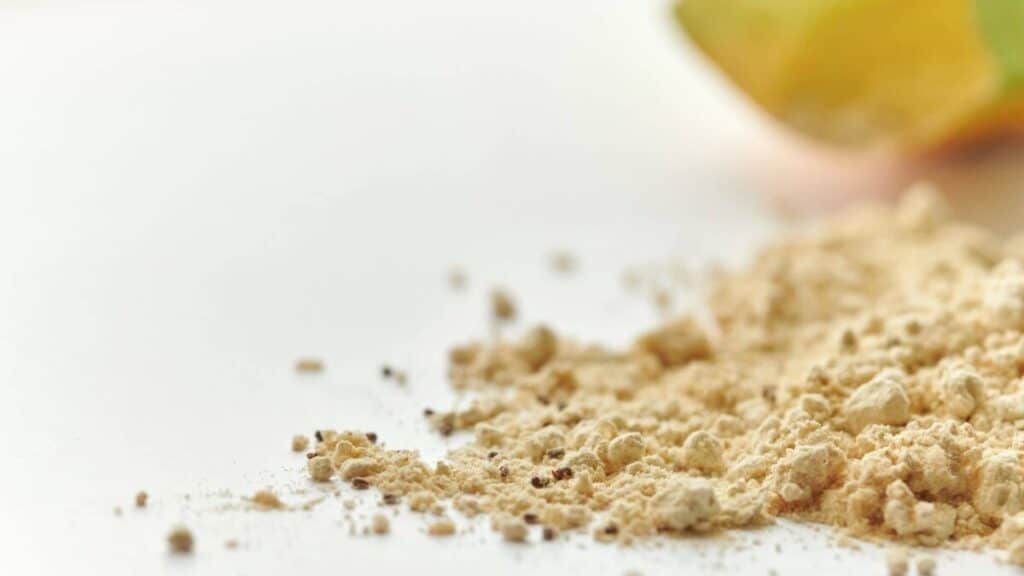
They also eat dried beans, peas, fruits, peppers, spices, chocolate, shelled nuts, cake mixes, cereals, and even some drugs.
One of the problems with the flour beetle is they live longer than most other bugs and that makes them terrible pests in food warehouses and grain processing plants.
They then travel in packaging to grocery stores and home kitchens.
Flour beetles can live for more than a year and eggs hatch between 5 to 12 days after a female lays them.
How to Rid Your Kitchen of Flour Beetles
These are some of the most common food pests. However, controlling them can be as simple as removing the infested food.
Don’t overlook things like macaroni and even unopened containers as sometimes these bugs can get through waxed paper, plastic, and cardboard containers.
Infestations often began in spilled grains and pet foods so make sure you don’t have any spillage of those items.
The two biggest problems are pet foods and birdseed so store all of that in well-sealed storage containers. Clean the containers before refilling them.
You will need to clean and vacuum pantry areas regularly to ensure there are no spilled foods in those areas.
Shelf paper also needs to be removed and cleaned. You can also caulk cracks and crevices in pantries to prevent food from collecting in tiny places.
A key way to avoid these pests is to use your dried food within two to four months of purchasing. Other foods can be kept longer as long as they are in airtight sealed containers.
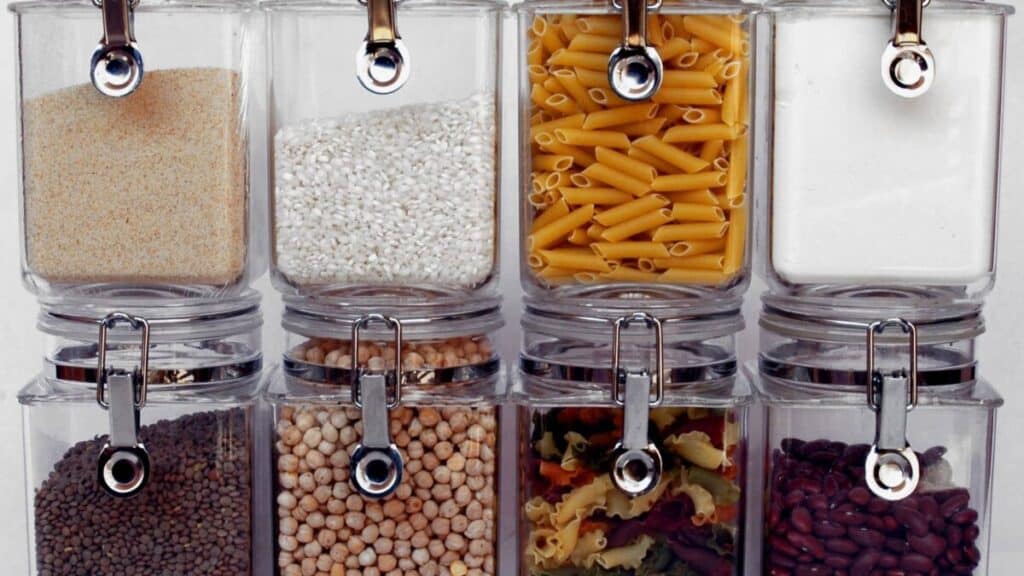
FAQs
Should I worry about these tiny bugs in my kitchen?
Moths, weevils, and small beetles are the most common kitchen pests. They can infest food and are super annoying but don’t cause serious problems like biting, stinging, or damaging your home.
Throw away infested food and do some deep cleaning to get rid of them
What are the brown bugs that look like ladybugs?
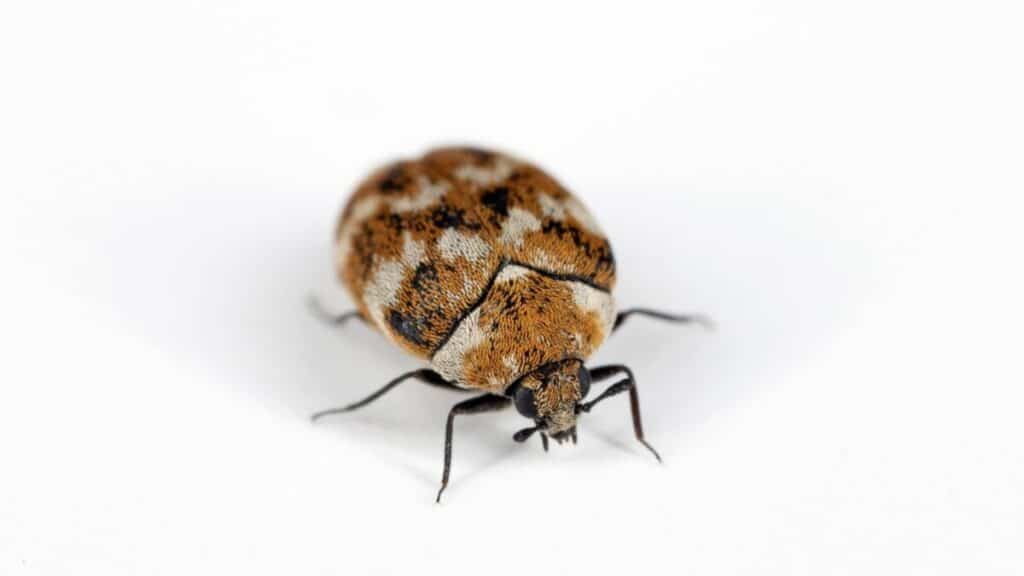
Those are furniture carpet beetles. They are smaller than ladybugs and have a brown shell with yellow spots.
You can get rid of them as you do other bugs with some deep cleaning and throwing infected things out.
Alright, that’s it for this article, here are a few hand-selected articles that you might also find interesting reads:
Small, Tiny Brown Bugs in My House – What Are They?Tiny black bugs in kitchen cupboards – What To Do Next
Kitchen Bugs Identification – 7 Most Commonly Found Bugs
Recent Posts
Tiny Black Bugs in Bathroom NO WINGS: What They Are and What to Do!
Finding tiny black bugs in your bathroom can be uncomfortable, to say the least. Especially if they are persistent, or they appear in very large numbers, which they often like to do. When it...
Tiny Black Bugs in Plant Soil - What Are They & What To Do About It
A short horror story: You get a new houseplant. You do your best to take care of it. You’ve ensured that it has the right soil, the right amount of sun, it gets enough water. And then one day, you...

